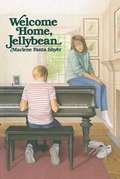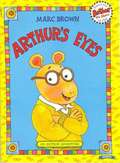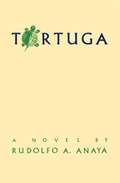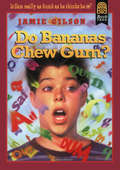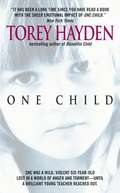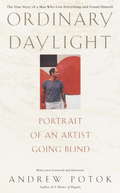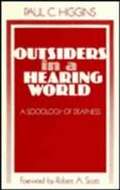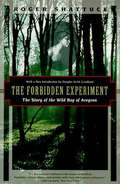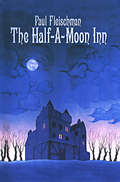- Table View
- List View
Walter
by David Cook[from inside flaps] "David Cook, the award-winning and widely acclaimed writer, demonstrates here his remarkable ability to blend drama, compassion, and even humor to tell the story of a rather special person. WALTER is one of Jesus' mistakes. Some call him "backward," some say he's "handicapped," and others just think of him as a joke. But as readers of this extraordinary novel are about to discover, WALTER is someone whom labels do not describe, a person to respect as well as like. Whether caring for his father's pigeons or working as a stock boy in Woolworths, life is not always easy for WALTER--his mother is frustrated with his handicap, his father is indifferent to his needs, and his co-workers ridicule and taunt him. Although WALTER is inarticulate, David Cook, with astonishing skill, speaks for him and describes his life in an unsentimental way while lending him a quiet dignity. Cook portrays WALTER as a caring, loving, growing man who learns to cope with life and its injustices, indifferences and ultimately death."
Welcome Home, Jellybean
by Marlene Fanta ShyerNeil Oxley's older sister, Geraldine, is coming home for the first time. After spending most of her life in institutions for the retarded, she is finally going to live with her family and adapt to the "real world".
White Coat, White Cane: The Extraordinary Odyssey of a Blind Physician
by David Hartman Bernard Asbell<P>The woman's arthritic fingers feel gnarled and crooked, her knees lumpy rocks. But I can detect no swelling, so I press here, there, trying to rouse an inflamed spot. "What are you doing"she challenges. "You're blind!" <P>"I'm examining you. Haven't you ever been examined by a blind doctor before?" <P>She refuses to be humored. "That's silly. What can a blind doctor do?" <P>"I'm not sure, but we're going to find out..." <P>When David Hartman, blind since the age of eight, announced his intention to become a doctor, the reactions ranged from sympathy to ridicule. How could he diagnose his patients? Examine them, except by touch? Look through a microscope? Even understand what was being described? <P>The battle lines were drawn: David and his family on one side, the schools and society on the other. But with an incredible strength of purpose, David Hartman went on to become the first blind person in over 100 years to enter medical school. What is it like to adjust to a world of darkness? David Hartman lets us know bluntly, with real emotion, insight, and humor. He had to relearn the simplest things. He had to overcome mental obstacles that were at times more formidable than the physical ones. Yet he was determined to reach beyond his difficulties to fulfill an impossible dream. <P>His teachers were helpful, hostile, embarrassed, unsure-and in medical school he had to work twice as hard. The work had to be read to him or translated into Braille. Often he had to rely on a sighted person to confirm his diagnosis, and he needed a nurse to read the patients' charts to him. But he utilized all his other senses to achieve his greatest desire: helping to heal. His journey is a moving and inspirational story for us all.
Arthur's Eyes
by Marc BrownNone of Arthur's friends wear glasses and his classmates tease him! But when he stops wearing them, he gets in all kinds of trouble. Maybe four eyes really are better than two.
Challenging Barriers to Change: Attitudes Towards the Disabled
by Harold E. Yuker J. Richard BlockThis small book is a lecture given by professors Yuker and Block in 1979 on attitudinal barriers concerning people with disabilities.
Living with Impaired Vision: An Introduction
by Anne Yeadon Dava GraysonBlind and visually impaired people: active, concerned about their jobs, their families, their communities, obtaining a good education, discovering interesting ways to use their leisure time, and above all, as different from one another as any other group of people who happen to have one characteristic in common. Today there are visually impaired people in every major area of employment from professional occupations to technical and clerical work. There are blind lawyers and college professors and insurance salesmen and social workers, blind typists and switchboard operators, auto mechanics and chemical engineers.
Tortuga
by Rudolfo AnayaSet in a hospital for crippled children, this novel explores the meaning of pain and suffering. Tortuga, meaning turtle, is a young boy who is paralyzed and is hospitalized. He nevertheless finds the courage to outdo pain and tragedy.
Do Bananas Chew Gum?
by Jamie Gilson Michael GarlandSam has made it most of the way through sixth grade, barely able to read and write, but now Sam's family have moved again and he is faced with the prospect of attending a new school. How long will he be able to keep his problem secret?
One Child
by Torey HaydenFinally, a beginning...<P><P> The time had finally come. The time I had been waiting for through all these long months that I knew sooner or later had to occur. Now it was here.<P> She had surprised me so much by actually crying that for a moment I did nothing but look at her. Then I gathered her into my arms, hugging her tightly. She clutched onto my shirt so that I could feel the dull pain of her fingers digging into my skin. She cried and cried and cried. I held her and rocked the chair back and on its rear legs, feeling my arms and chest get damp from the tears and her hot breath and the smallness of the room.
One of the Lucky Ones
by Lucy Ching<P>Many people might think me unlucky because I am blind, writes Lucy Ching in this poignant autobiography, but I prefer to think of myself as one of the lucky ones. <P>Indeed, Lucy Ching's achievements despite total blindness would be outstanding in any time and place- especially so in China of the 1930s, where the blind were treated as outcasts and blind children were sometimes sold into slavery by their own families. Lucy Ching was fortunate enough to be kept at home with her parents, but as she reveals in this remarkable memoir, her triumph over her disability was due to her own fierce determination... and to a very special friendship. Under the devoted care of her amah, an illiterate servant woman who was guided only by common sense, intuition and affection for the child, Lucy Ching learned to live in a sighted world, vowing to have the independence and fulfillment of a profession. <P>As a child, Lucy taught herself to read and write in braille and was allowed to attend school with sighted children. And, quite against the beliefs of her family, she converted to Christianity and made a solemn promise to God that her lifework would be to help the blind. Lucy's unflagging dedication was rewarded with a scholarship to the Perkins School for the Blind in Boston, where she received the special training which has enabled her to carry out her promise. <P>My life could have been spent in enforced idleness and isolation, observes Lucy Ching, cut off from other people and their lives and problems. But I was luckier than that. God had other plans for me. <P>Like Helen Keller, she found herself, her work and her God through affliction. Today Lucy Ching is a social worker in Hong Kong, where she works with the blind as well as other handicapped people.
Ordinary Daylight: A Portrait of an Artist Going Blind
by Andrew Potok<P>Andrew Potok is an intense, vigorous, sensual man--and a gifted painter. Then, passing forty, he rapidly begins to go blind from an inherited eye disease, retinitis pigmentosa. Depressed and angry, he rages at the losses that are eradicating his life as an artist, his sources of pleasure, his competence as a man. He hates himself for becoming blind. But as he will ultimately discover, and as this remarkable memoir recounts, it is not the end of the world. It is the beginning. <P> his the story of Potok's remarkable odyssey out of despair. He attempts to come to terms with his condition: learning skills for the newly blind, dealing with freakish encounters with the medical establishment, going to London for a promised cure through a bizarre and painful "therapy" of bee stings. He wrestles with the anguish of knowing that his daughter has inherited the same disease that is stealing his own eyesight. And then, as he edges ever closer to complete blindness, there comes the day when he recognizes that the exhilaration he once found in the mix of paint and canvas, hand and eye, he has begun to find in words. <P>By turns fierce, blunt, sexy, and uproariously funny, Andrew Potok's memoir of his journey is as shatteringly frank as it is triumphant.
Outsiders in a Hearing World: A Sociology of Deafness
by Paul C. HigginsSociological observations on several topics in the deaf community: identity, deviance among the deaf, stigma, and encounters with the hearing.
Save Me! A Young Woman's Journey through Schizophrenia to Health
by Judy LeeThe author describes growing up with an alcoholic mother and plunging into the drug culture during her years as a college student. After several LSD trips she found herself losing touch with reality, and was diagnosed as a paranoid schizophrenic. With the help of a "reality therapist" and her deep Christian faith she finally managed to rebuild her life.
The Arthritis Helpbook: What You Can Do for Your Arthritis
by Kate Lorig James F. FriesThis is an explanation of the various kinds of arthritis, and what patients can do about it. Although the book is 25 years old (in 2005), the self-help component remains highly useful.
The Blind Outlaw
by Glen RoundsAfter a beautiful blind horse is caught with a band of range horses, a young boy at the ranch, who cannot speak, takes on the task of training the colt. Can a mute boy save a blind horse?
The Demography of Blindness Throughout the World
by Hyman Goldstein<P>Most of the world's blindness could be prevented, and the attack on it and its consequences proceeds apace through such organizations as the World Council for the Welfare of the Blind, the International Agency for the Prevention of Blindness, and the World Health Organization. <P>For greatest effectiveness, their programs must be based upon accurate data, as a WHO study quoted here by Dr. Goldstein makes clear: "In order to establish appropriate priorities for prevention and treatment at the national and international level, it is essential that reliable up-to-date statistical data on prevalence, age of onset, and causes of blindness be obtained." <P>But even in the United States, where collection of data on blindness began in 1830, there are still no reliable trend data. In much of the rest of the world data are fragmentary, and data that would allow valid country by country comparisons are almost non-existent. <P>Dr. Goldstein has done a valuable service in pulling together such statistics as can be found, and in discussing their weaknesses and strengths.
The Forbidden Experiment: The Story of the Wild Boy of Aveyron
by Roger ShattuckRoger Shattuck offers a captivating account of this fascinating episode in intellectual history. He examines the relationships that developed among the boy, soon named Victor; Madame Guerin, the woman who fed and washed him; and Itard, the tutor who defiled his colleagues who believed the boy was hopelessly retarded.
The Half-a-Moon Inn (A\trophy Bk.)
by Paul FleischmanA mute boy is held captive by the strange proprietress of an inn.
The Handicapped in Literature: A Psychosocial Perspective
by Eli M. BowerThe way to understand the nature of the special education task is to know the children and youth. One excellent way to know them is to experience their lives, drawn taut by the sensitivity and insight of the literary masters. That is the "why" of this book. It does not stop with information; it arouses and activates empathic feelings for handicapped.
The Learning Disabled Child: Ways That Parents Can Help
by Suzanne H. StevensStevens gives parents what they need to determine whether or not their child has a learning disability. She then provides tips to help parents navigate the public school system in order to obtain help. She also presents adaptive techniques, discusses the therapies which are available and what they can do. She asks parents the tough questions which need to be answered if a learning-disabled child is to succeed in a regular classroom and adapt successfully to the disability. Clear, concises, informative, upbeat, practical.
The New Boy Is Blind
by William J. Thomasfrom the book jacket: Ricky is in the fourth grade-but he's never been in school before. He is just like all his classmates except for one special difference-he is blind. How he adjusts to this new world of the clasroom, the playground, and the people around him-and how they adjust to him-makes a sensitive story about frustration and triumph. Ricky's friends, teachers, and, most of all, his mother learn an important lesson that while Ricky is blind, he is still able to do everything.
Theories of Illness: World Survey
by George Peter MurdockTheories of Illness establishes a new landmark in comparative studies. Utilizing concepts from modern medicine and anthropological theory, Professor Murdock distinguishes the natural causes of illness from theories of supernatural causation. He subdivides the latter into theories of illness that are related to aggression (witchcraft, sorcery, and spirit aggression) and those which are related to guilt and a sense of sin (taboo violation and mystical retribution). Obviously, these relate to man's most basic beliefs as revealed in early religions.
A Way Of His Own
by T. A. DyerA lame boy from a very primitive nomadic tribe is abandoned by his family and, together with a girl stolen from another tribe, tries to survive a cruel winter.
Adjustment to Severe Physical Disability: A Metamorphosis
by Charlene Deloach Bobby G. Greer<p><i>Adjustment to Severe Physical Disability: A Metamorphosis</i>, then, is designed for professionals-in-training, practicing professionals, and parents or families of disabled persons. <p>The book deals with (1) the societal misconceptions that impede the physical, psychological, and social adjustment of disabled persons; (2) the effects these misconceptions have on the attitudes and effectiveness of those who work with disabled persons; and (3) existing services, laws, environmental changes, and technological advances that affect both the efforts of professionals and the lives of disabled persons. In keeping with the goals of this book, the content ranges from hard science to advocacy, from objective data to personal experiences. Case illustrations are designed to stimulate discussion and self-exploration, as well as to illuminate the factual basis for author opinions with no printed sources. Ideally, these illustrations will serve a heuristic function, leading students to conduct needed research into the psychosocial aspects of disability. </p>
Berthold Lowenfeld on Blindness and Blind People: Selected Papers
by Berthold LowenfeldThis book contains articles spanning a period of almost 40 years by Dr. Berthold Lowenfeld, a creative writer in education of the visually handicapped on Blindness and Blind People.

